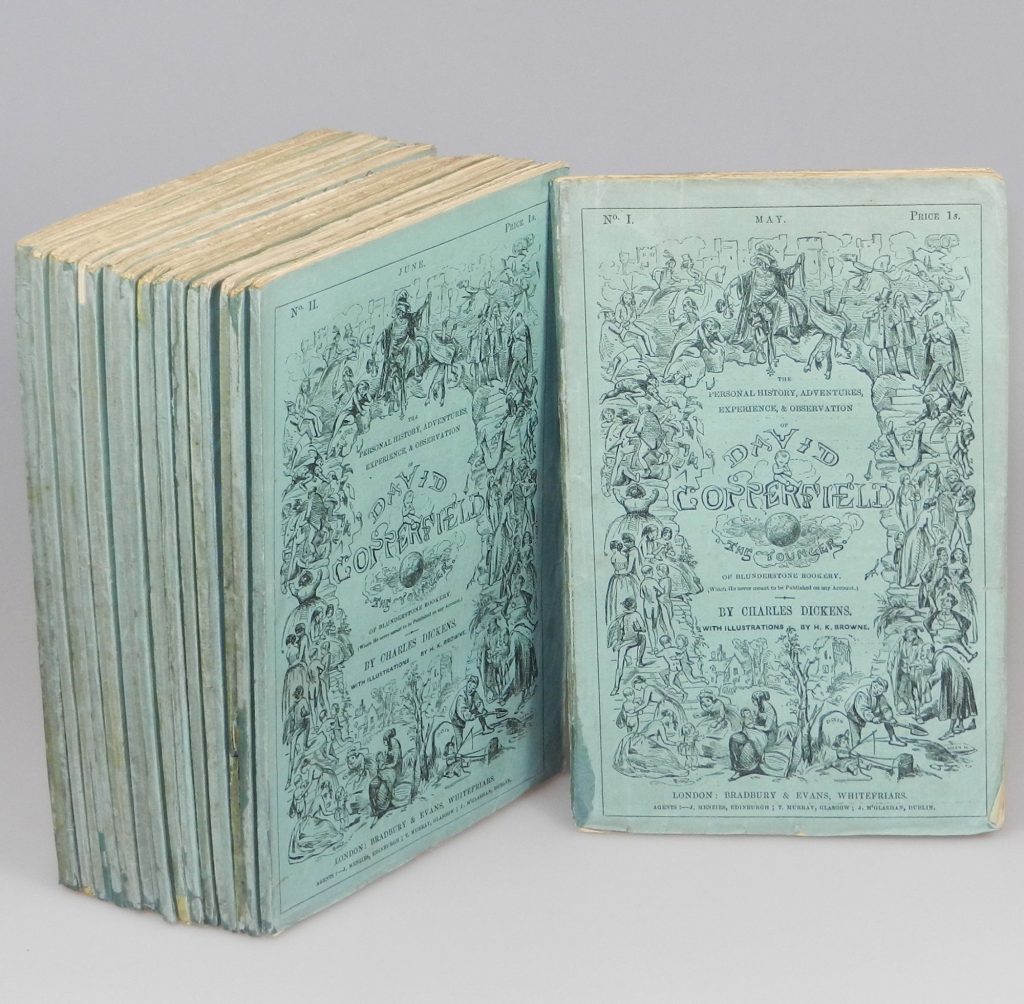 We are all familiar with books series, the books being related by similar characteristics, such as themes, characters, locations. Each book forms a story on its own and can be read independently, although most often a thread runs from one book to the next. The James Bond series is typical of the genre.
We are all familiar with books series, the books being related by similar characteristics, such as themes, characters, locations. Each book forms a story on its own and can be read independently, although most often a thread runs from one book to the next. The James Bond series is typical of the genre.
Recent years have seen the return of another type of books’ group, the serial. In literature, a serial is a single work published in separate parts, in sequential instalments. Each part needs to provide new information, to move the story forward, but leave the reader hungry and wanting more. With each part, the reader doesn’t have the entire story in their hand: only as a whole is a story complete.
 This printed format is not new and certainly not without success in the past. In the Victorian era, Charles Dickens, one of the most famous novelists of all time, released his novels by episodes, not in book form. He used various supports to publish his serialised work – magazines, newspapers, or individual publication – and made his writing more available to a wider audience who could not afford to buy a whole book. Each instalment was so captivating, readers waited eagerly for the next episode. Charles Dickens was not the only serial literature aficionado: Wilkie Collins, George Eliot, Elizabeth Gaskell, Thomas Hardy, Robert Louis Stevenson – to name only a few – followed the same concept.
This printed format is not new and certainly not without success in the past. In the Victorian era, Charles Dickens, one of the most famous novelists of all time, released his novels by episodes, not in book form. He used various supports to publish his serialised work – magazines, newspapers, or individual publication – and made his writing more available to a wider audience who could not afford to buy a whole book. Each instalment was so captivating, readers waited eagerly for the next episode. Charles Dickens was not the only serial literature aficionado: Wilkie Collins, George Eliot, Elizabeth Gaskell, Thomas Hardy, Robert Louis Stevenson – to name only a few – followed the same concept.
The new rise of the serialised novel is discreet, yet it is steadily gaining in popularity in the literary worlds and in the mass markets. One can understand why: momentum is its keyword. From the first few pages of the first instalment, the story must be riveting. It needs to keep the reader gripped by every twist and turn in each new part, always leaving the reader on a cliffhanger. This constant compelling nature makes for a captivating read through every page. The serial trend is such that some companies – such as Plympton, Dailylit, Mousehold Words or St Martin’s Press – are now developing apps or programmes releasing books in serial forms. Amazon even has a Kindle Serial option.
And I, too, fell for the appeal of serial literature, even though it took me some time to be aware of what I was doing in practice.
 A few years ago, I started to share my stories with a few friends by emailing them monthly a new short story. When the idea of The Fog Chronicles came to me, I continued with the routine of sending my novel by portions as and when I had finished writing them. After two years, I had written about 250,000 words with my friends always demanding more. Without realizing it, I had written in instalments the first volume of The Fog Chronicles collection, GATEKEEPERS, and already had in mind the sequel, HORIZONS. With the help of professionals, I cleaned up the text and published my first work as one large novel. However, something did not feel right. It took me some time to define what: by publishing the novel as a whole, it missed the original rhythm and anticipation created by the breaks between issues. So, less than two years later, I decided to restructure my novel and regain some of the serial
A few years ago, I started to share my stories with a few friends by emailing them monthly a new short story. When the idea of The Fog Chronicles came to me, I continued with the routine of sending my novel by portions as and when I had finished writing them. After two years, I had written about 250,000 words with my friends always demanding more. Without realizing it, I had written in instalments the first volume of The Fog Chronicles collection, GATEKEEPERS, and already had in mind the sequel, HORIZONS. With the help of professionals, I cleaned up the text and published my first work as one large novel. However, something did not feel right. It took me some time to define what: by publishing the novel as a whole, it missed the original rhythm and anticipation created by the breaks between issues. So, less than two years later, I decided to restructure my novel and regain some of the serial
spirit
. It was impossible to recreate my original email distribution, so I opted for a serialised novel delivered in three acts: Fogbound, Crisis and Power (Gatekeepers I, II, and III), and then Uprising, Chaos and Optimum (Horizons I, II, and III). The serial books are available to buy in ebook format here on virginiebb.com.
Thank you for reading,
Yours, Virginie